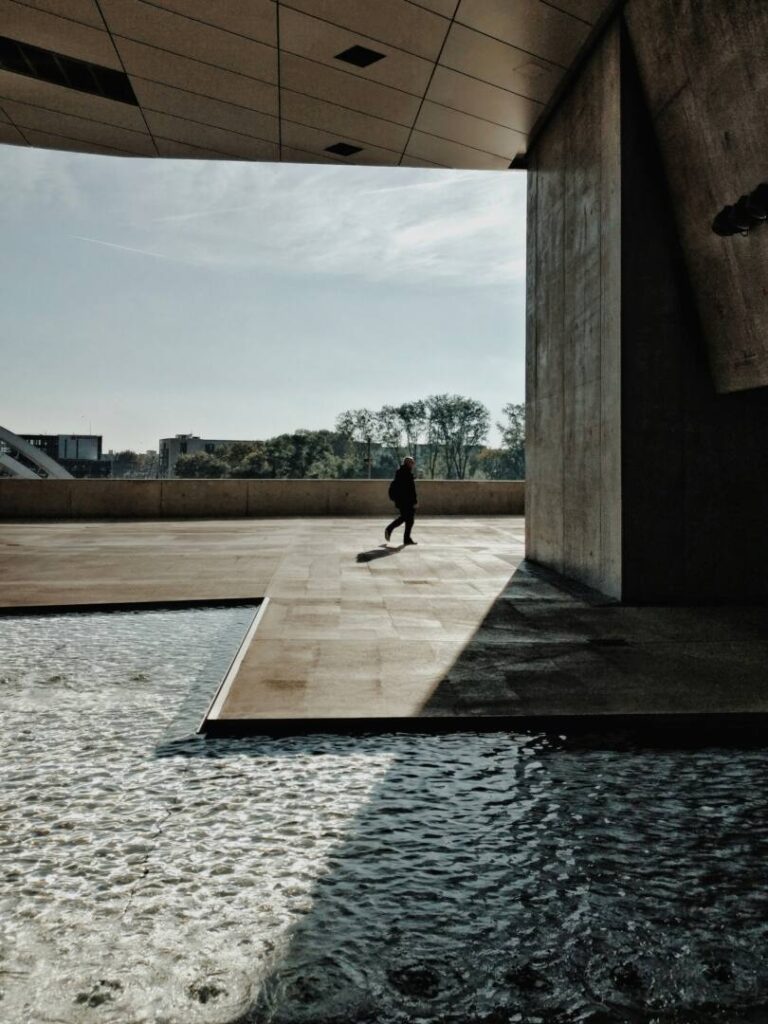Transforming Spaces with Decorative Concrete: A Fusion of Art and Architecture
In the dynamic world of architecture and design, the creative use of materials can transform ordinary spaces into extraordinary experiences. Decorative concrete has emerged as a versatile and durable material, offering endless possibilities for innovation in both aesthetics and functionality. This blog explores the myriad of creative uses of decorative concrete in architecture and design, showcasing how it can elevate projects with its unique blend of practicality and beauty.
Introduction to Decorative Concrete
Decorative concrete is not just a material; it’s a canvas for creativity. With techniques such as stamping, staining, polishing, and engraving, architects and designers can mimic natural textures like wood, stone, and brick, or invent new patterns and colors. This adaptability makes decorative concrete a favorite among professionals looking to push the boundaries of design.

Innovations in Public Spaces
Public spaces have seen a significant transformation with the application of decorative concrete. Urban parks, plazas, and walkways utilize colored and textured concrete to create vibrant, inviting areas that enhance the community’s quality of life. Beyond aesthetics, decorative concrete in public spaces contributes to sustainability through its durability and low maintenance requirements, making it a smart choice for cities aiming to combine function with flair.
Residential Beauty and Durability
In residential architecture, decorative concrete offers homeowners the ability to customize their spaces uniquely. From elegant polished concrete floors that provide a sleek, modern look to stamped concrete patios that add a touch of nature without the upkeep of wood or stone, decorative concrete is both practical and beautiful. Its thermal mass properties also contribute to energy efficiency, making it a wise choice for eco-conscious designs.
Commercial and Retail Spaces
The commercial and retail sectors have embraced decorative concrete for its ability to create a strong brand identity. Polished concrete floors in boutiques and restaurants reflect sophistication, while customized logos and designs embedded into concrete surfaces offer a unique branding opportunity. The material’s durability withstands high traffic, ensuring that spaces not only look captivating but also remain in pristine condition over time.
Artistic Expressions in Concrete
Perhaps the most exciting aspect of decorative concrete is its potential as a medium for artistic expression. Sculptures, wall reliefs, and artistic installations crafted from decorative concrete contribute to the cultural fabric of spaces, blurring the lines between functionality and art. This use of concrete challenges traditional perceptions, positioning it as a material that can convey emotion and tell stories.
Conclusion: The Future of Decorative Concrete in Design
The creative uses of decorative concrete in architecture and design represent a fusion of functionality and artistry. As architects and designers continue to explore the potential of this versatile material, we can expect to see even more innovative applications that challenge the conventional and inspire the imagination. Decorative concrete not only shapes spaces but also enhances the human experience, making it a pivotal material in the future of design.
Back To Blog
